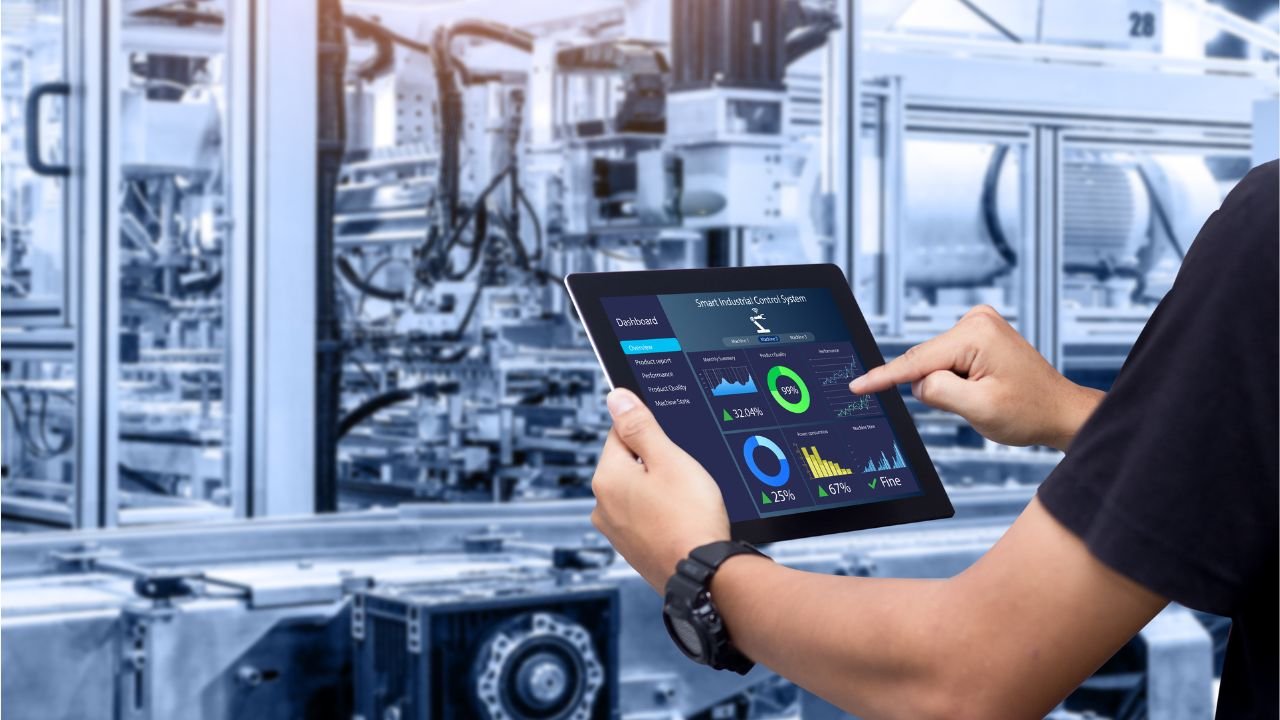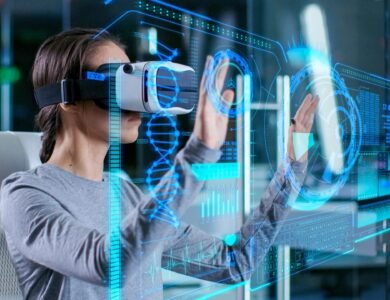Latest Technology in Computer Science
Have you ever wondered how the world of computer wisdom keeps evolving? The horizon seems measureless, with new technological sensations sprouting every day. Let’s dive deep into some of the latest advancements.
Introduction to Latest Technology in Computer Science: Key Innovations
It’s an exciting era for computer science specialists. With rapid advances in various domains, what was once science fiction is now becoming a reality. Remember Star Trek’s teleportation? We’re not there yet, but who knows what the future holds? The realm of computer science continually evolves, introducing transformative technologies. From AI and quantum computing to blockchain and advanced cybersecurity, these innovations are redefining the boundaries of digital capabilities and shaping the future of global technological landscapes.

Quantum Computing
A realm once dominated by classic computers is now witnessing a revolution. Enter quantum computing. Quantum computing harnesses quantum mechanics principles to process information. Unlike classical bits, quantum bits (qubits) can exist in superpositions, allowing simultaneous computations. This promises unprecedented speed for specific tasks, revolutionizing cryptography, optimization, and material science. Still in development, quantum computing challenges our conventional computing understanding.
Quantum Mechanics Basics
At its core, quantum computing leverages principles of quantum mechanics, a perplexing yet abecedarian branch of drugs. Flashback to Schrodinger’s cat. It’s both alive and dead, representing the quantum state of superposition.
Superposition and Entanglement
Traditional bits are binary: 0 or 1. However, Quantum bits (qubits) can be in a state of 0, 1, or both, thanks to superposition. When qubits get entangled, the condition of one affects the other, regardless of distance.
Quantum Bits (Qubits)
Qubits are the backbone of quantum computers. These machines harness qubits to perform calculations at speeds unattainable by classical counterparts. Quantum bits, or qubits, are the fundamental units of amount computing. Unlike classical bits, which are double( 0 or 1), qubits can live in a superposition of countries. This enables contemporaneous processing of multiple possibilities, granting amount computers implicit advantages for specific tasks over classical counterparts. Qubit consonance remains a challenge.
AI and Machine Learning
The growth of Artificial Intelligence( AI) is nothing short of remarkable. Machine Learning( ML), a subset of AI, makes swells. Artificial Intelligence (AI) encompasses systems mimicking human intelligence processes. Machine Learning (ML), a subset of AI, involves algorithms learning from data without explicit programming. By identifying patterns, ML systems improve performance over time, driving advancements in automation, prediction, and personalization across diverse applications.

Neural Network Advances
Neural networks mimic the human brain. Advances in this space allow computers to “learn” from vast data sets, much like how we learn from experiences. Neural networks, inspired by brain structures, are foundational for deep learning. Recent advances enhance performance, scalability, and efficiency. Innovations include novel architectures, transfer learning, attention mechanisms, and more. These developments propel AI breakthroughs in image recognition, language processing, and predictive analytics, pushing technological frontiers further.
Generative Adversarial Networks
Imagine two AIs playing a game. One creates a masterpiece, and the other critiques it. That’s the principle behind Generative Adversarial Networks (GANs). Generative Adversarial Networks( GANs) are a class of machine literacy fabrics. Two neural networks, the creator and discriminator, contend in a game-theoretic setting. The creator produces data, while the discriminator distinguishes natural from generated data. Together, they facilitate iteratively, enabling GANs to induce largely realistic labor. Common in image conflation.
Transformer Architectures
From language models to image recognition, transformer architectures are transforming (pun intended!) the way machines comprehend data. Transformer architectures revolutionized natural language processing. Relying on self-attention mechanisms, they weigh input elements differently based on context, facilitating parallel processing and capturing long-range dependencies. Transformers, like BERT and GPT, achieve state-of-the-art results in various tasks, making them the backbone of modern deep-learning language models.
Augmented Reality (AR) and Virtual Reality (VR)
Stepping into virtual worlds or overlaying digital information onto our physical realm, AR and VR are reshaping industries. Augmented Reality ( AR) overlays digital information onto the real world, enhancing real-time gests. Virtual Reality ( VR) immerses druggies in an utterly digital terrain, furnishing a simulated experience. Both technologies offer transformative eventuality, reshaping gaming, education, training and design. They bridge digital and physical realms, reconsidering interactive gests.
Evolution of AR/VR
From simple video game gimmicks to sophisticated tools for surgeons, the journey of AR and VR is genuinely noteworthy. The evolution of AR/VR traces from rudimentary simulations to sophisticated immersive experiences. Early concepts, constrained by technology, have matured with graphics, sensors, and computing advances. Today’s devices offer high-resolution visuals and intuitive interactions, expanding applications beyond gaming to healthcare, education and enterprise, showcasing technology’s transformative potential.
Applications in Gaming
Dive deep into immersive worlds with VR or battle dragons in your living room through AR. The gaming world has been revolutionized! Gaming applications leverage technology to create immersive experiences. Enhanced graphics, real-time physics, and artificial intelligence elevate gameplay realism and dynamics. Multiplayer platforms foster global connections, while virtual and augmented reality immerse players in 3D worlds. Innovations continue to redefine boundaries, offering gamers richer, more interactive narratives and challenges.

Medical Uses of AR/VR
Surgeons can rehearse complex procedures in a virtual environment, while patients can use VR for pain management. Medical uses of AR/VR include surgical simulations, patient therapy, and medical training. AR assists surgeons with overlaid imaging during procedures, while VR aids patient rehabilitation and pain management. Both technologies offer immersive environments for medical students to practice techniques and diagnostics, enhancing skill acquisition and patient care.
5G Technology
Remember the dial-up days? We’ve come a long way with 5G promising lightning-fast speeds. 5G technology represents the fifth generation of mobile networks, succeeding 4G. It offers significantly brisk data download and upload pets, reduced quiescence, and enhanced connectivity. 5G’s capabilities support the Internet of Things( IoT), stoked and virtual reality, independent vehicles, and more, revolutionizing communication and enabling new operations.
Speed and Efficiency
5G is faster and more efficient, paving the way for the Internet of Things (IoT) and smart cities. Rate refers to how quickly tasks are completed, while efficiency measures the effectiveness of resource use in achieving outcomes. Together, they optimize processes, ensuring swift results with minimal waste. Balancing speed and efficiency in various contexts, from computing to business, is crucial for productivity and sustainable growth.
Industrial Application
From automated factories to remote surgeries, 5G is setting new standards. Industrial applications pertain to the practical use of technologies, methodologies, and systems within industrial settings. They aim to enhance production, improve safety, and optimize operations. From automation robotics to predictive maintenance and quality control, these applications drive efficiency, reduce costs, and bolster the overall output in the manufacturing and processing sectors. a

Enhanced Mobile Broadband
Stream 8K videos on the go? With 5G, it’s possible! Enhanced Mobile Broadband (eMBB) is a usage scenario for 5G networks, focusing on delivering faster data speeds and higher capacity. eMBB supports high-density data usage, providing seamless high-resolution video streaming, virtual and augmented reality experiences, and rapid content downloads, ensuring consistent user experiences in densely populated areas.
Edge Computing
While cloud computing centralizes data processing, edge computing pushes it closer to data sources. Edge computing processes data closer to data sources, like IoT devices, rather than relying solely on centralized cloud servers. This decentralization reduces latency, accelerates responses, and conserves bandwidth. By optimizing data processing at the “edge” of the network, it supports real-time applications, enhancing efficiency and responsiveness in diverse scenarios.
Differences from Cloud Computing
Think of Edge as your local grocery store, while Cloud is the mega supermarket in the city. Sometimes, it’s just quicker to pop into the local store. Cloud computing centralizes data processing and storage in large data centers. Edge computing decentralizes processing data closer to its source. The difference lies in location, response time, and bandwidth efficiency.
Benefits of Edge
Reduced latency and faster processing, especially crucial for real-time applications. Benefits of edge computing include reduced latency, enabling real-time processing for applications like autonomous vehicles and IoT devices. It conserves bandwidth, reducing data traffic to central servers. By processing locally, edge computing enhances security and privacy, mitigates significant server dependencies, and supports operations in bandwidth-constrained or remote environments.
Real-time Data Processing
From autonomous vehicles to intelligent wearables, real-time processing is vital, and edge computing is the key. Real-time data processing involves instantly analyzing and acting upon data as it’s received or generated. Unlike batch processing, which collects and processes data at intervals, real-time processing ensures immediate response and action. This immediacy is crucial for applications like autonomous driving, financial trading, and emergency response systems.
Cybersecurity
With great power comes great responsibility. As technology advances, so do pitfalls. Cybersecurity involves guarding systems, networks, and data from digital attacks. It encompasses measures to help prevent unauthorized access, use, exposure, dislocation, or destruction of information. As cyber pitfalls evolve, cybersecurity strategies integrate technology, processes, and practices to guard data integrity, confidentiality, and vacuity across bias and platforms.

Advanced Threats
Cyberattacks are evolving, with hackers employing sophisticated techniques. Advanced threats refer to sophisticated cyber-attacks often orchestrated by organized groups with deep resources. These threats utilize a blend of styles to bypass traditional security measures, remaining undetected for extended periods. Their objectives vary, from data theft to system disruption, challenging conventional cybersecurity frameworks and demanding innovative countermeasures.
AI in Cybersecurity
AI isn’t just for good; cybercriminals are also weaponizing it. On the flip side, AI can be our defense. AI in cybersecurity enhances threat detection and response by analyzing vast datasets rapidly. Machine learning models identify patterns, predicting and identifying anomalies indicative of potential breaches. AI-driven tools automate routine tasks, bolster real-time threat analysis, and adapt defenses, offering a dynamic approach to evolving cyber threats and vulnerabilities.
Blockchain and Security
Immutable ledgers, transparency, and decentralized control? Blockchain might be the answer to many security challenges. Blockchain offers decentralized, tamper-evident ledgers, ensuring data integrity and transparency. Each block is cryptographically linked, making unauthorized alterations evident. It supports secure transactions without intermediaries, enhancing trust. Initially, for cryptocurrencies, blockchain’s security features are now explored in supply chains, voting systems and digital identity verification, among other applications.
Conclusion to Latest Technology in Computer Science
The world of computer science is vast, dynamic, and ever-evolving. From quantum leaps to virtual realities, the realm is rife with innovations. As we embrace these advancements, we must ensure their ethical and responsible use with great power. The latest advances in computer science, encompassing AI, quantum computing, blockchain, and enhanced cybersecurity, are reshaping the digital landscape. These technologies promise unprecedented capabilities, presenting both opportunities and challenges for the future of computing and global digital infrastructure.
FAQs for the Latest Technology in Computer Science
How secure is quantum computing?
Quantum computers could break many current encryption methods and promise ultra-secure quantum encryption.
Is 5G harmful to health?
Research indicates that 5G, like its predecessors, is safe within the recommended limits.
How does edge computing work with the Internet of Things (IoT)?
Edge computing processes data closer to IoT devices, reducing latency and enhancing efficiency.
Can AR and VR be used in education?
Absolutely! They offer immersive learning experiences, from historical reenactments to virtual field trips.
How much do you like article?
Rate our article (Latest Technology in Computer Science: Key Innovations)





